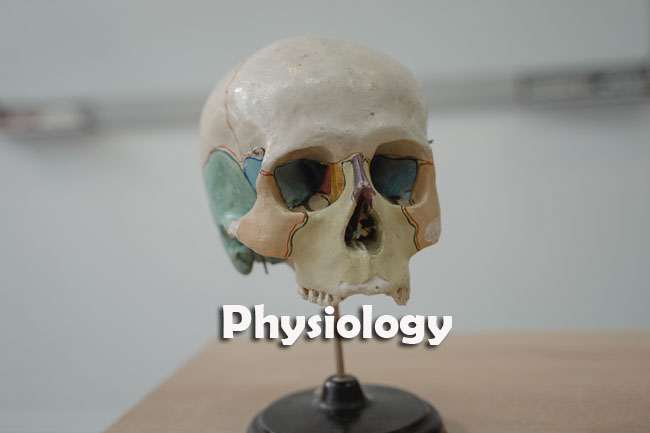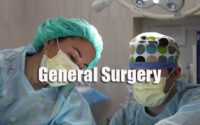Physiology Questions and Answers
Physiology Questions and Answers PDF are available here. So, aspirants can refer the nervous system physiology Question given in this page. Candidates can also free download nervous system physiology Previous Papers from the given enclosed links.

We have provided all the Last 5 years cardiovascular physiology Previous Papers on this page. So, the applicants who are in search of cell physiology Model Papers can download from the given free downloading links. Before you start the preparation, refer these nclex physiology questions Papers once, so that you will know the exam pattern.
By solving more cell physiology Sample Papers, you will score good marks in the examination. Aspirants who are going to attend the written test must read the blood physiology Previous Papers. So, we decided to help the candidates with information related to human physiology neet questions.
Questions and Answers on Physiology
1. Chief efferent projection fibres from Basal Ganglia arise from:
(1) Caudate Lobe
(2) Globus Pallidus
(3) Putamen
(4) Subthalamic nucleus
2. All are medial descending pathways EXCEPT:
(1) Vestibulospinal tract
(2) Rubrospinal tract
(3) Reticulospinal tract
(4) Tectospinal tract
3. Large synaptic vesicles contain:
(1) Acetylcholine
(2) Glycine
(3) Neuropeptides
(4) GABA
4. A 40 year old man with history of syphilis complaints of lightning pains and ulcers at pressure points. He is found to have loss of position and vibration sense. The possible diagnosis is: .
(1) Syringomelia
(2) Tabes Dorsalis
(3) Brown Sequard Syndrome
(4) Autonomic neuropathy
5. Which of the following is NOT a part of Central Auditory Pathway?
(1) Medial Geniculate Body
(2) Inferior Colliculus
(3) Lateral Geniculate Body
(4) Superior Olives
6. The cells in cerebellum that secrete Glutamate as neuro-transmitter are:
(1) Basket cells
(2) Stellate cells
(3) Granule cells
(4) Purkinje cells
7. Tonic labyrinthine reflex is integrated in:
(1) Spinal cord
(2) Medulla
(3) Midbrain
(4) Cortex
8. In Brown Sequard Syndrome, lower motor neuron lesion features are seen at:
(1) Ipsilateral at the level of lesion
(2) Ipsilateral below the level of lesion
(3) Contralateral at the level of lesion
(4) Contralateral below the level of lesion
9. No matter where a particular sensory pathway is stimulated along its course to the cortex, the conscious sensation produced is referred to the location of the receptor. This principle is called:
(1) Law of projection
(2) Law of specific nerve energy
(3) Weber Fechner law
(4) Bell Magendie law
10. Excessive hypersensitivity of pain receptors is called:
(1) Anodynia
(2) Primary hyperalgesia
(3) Secondary hyperalgesia
(4) Causalgia
11. Kinocilium is NOT present in:
(1) Semicircular canals
(2) Cochlea
(3) Utricle
(4) Saccule
12. 8-13 Hz and an amplitude of 50-100 µV EEG waves are:
(1) Alpha
(2) Beta
(3) Theta
(4) Gamma
13. Sleep spindles appear in which stage of NREM sleep:
(1) I
(2) II
(3) III
(4) IV
14. The inability to identify objects by feeling them is called:
(1) Aphasia
(2) Astereognosis
(3) Dyslexia
(4) Dissociative anaesthesia
15. The neuro-transmitter secreted by Granule cells in Olfactory Bulb is:
(1) Acetyl choline
(2) Glycine
(3) Glutamate
(4) GABA
16. The mechanical advantage of the Ossicle chain is:
(1) Less than 1
(2) Greater than 1
(3) Equal to 1
(4) Equal to 0
17. Which cells in retina can either by hyperpolarising or depolarizing?
(1) Rods and Cones
(2) Bipolar cells
(3) Amacrine cells
(4) Ganglion cells
18. Most of the refraction that occurs in eye is at:
(1) Anterior surface of cornea
(2) Posterior surface of cornea
(3) Anterior surface of lens
(4) Posterior surface of lens
19. Which hormone is responsible for “Milk Ejection” reflex?
(1) Prolactin
(2) Estrogen
(3) Oxytocin
(4) Secretin
20. Calcitonin is produced by:
(1) Thyroid
(2) Parathyroid
(3) Thymus
(4) Kidney
| Questions and Answers | Quiz |
| MCQs | Practice Set |
| Nursing Exam | HESI A2 |
21. Thyroid binding globulin increases in –
(1) Diabetes Mellitus
(2) Pregnancy
(3) Grave’s disease
(4) Nephrotic syndrome
22. Ghrelin is responsible for:
(1) Stimulation of appetite
(2) Stimulation of sleep
(3) Stimulation of heart
(4) Stimulation of respiration
23. Addison’s discase is:
(1) Primary hyperaldosteronism
(2) Primary adrenal insufficiency
(3) Secondary adrenal insufficiency
(4) Secondary hyperaldosteronism
24. Increased glycolysis and decreased gluconeogenes is occur due to:
(1) Glucagon
(2) Insulin
(3) Epinephrine
(4) Cortisol
25. Vasopressin is secreted by:
(1) Supra optic nucleus
(2) Pre-optic nucleus
(3) Lateral geniculate nucleus
(4) Ventroposterior nucleus
26. Growth hormone level is decreased in:
(1) REM sleep
(2) Fasting
(3) Exercise
(4) Stressful stimuli
27. Sertoli cells secrete all of the following EXCEPT:
(1) Testosterone
(2) Androgen binding protein
(3) Inhibin
(4) MIS
28. Afferents for swallowing are all EXCEPT:
(1) Trigeminal
(2) Glossopharyngeal
(3) Vagus
(4) Hypoglossal
29. Which period of Migrating Motor Complex is associated with regular activity?
(1) Phase-I
(2) Phase-II
(3) Phase-III
(4) All of these
30. Which of the following decrease Gastrin secretion?
(1) Amino acids in lumen
(2) Distension of stomach
(3) Increased vagal discharge
(4) Somatostatin
31. Which of the following causes stimulation of Gastro-intestinal smooth muscle?
(1) NO
(2) ATP
(3) VIP
(4) Substance P
32. Substances that cause increased secretion of bile by causing contraction of gall bladder are called:
(1) Choleretics
(2) Cholagogues
(3) Cholelithiasis
(4) Hydrocholeretics
33. Which of the following is NOT an action of CCK?
(1) Secretion of enzyme with pancreatic juice
(2) Increased gastric emptying
(3) Contraction of gall bladder
(4) Augmentation of action of secretion
34. Iron is predominantly observed in:
(1) Stomach
(2) Duodenum
(3) Colon
(4) Ileum
35. The current through chloride channels is:
(1) Inward depolarising
(2) Outward depolarising
(3) Inward hyperpolarising
(4) Outward hyperpolarising
36. The largest buffering capacity of blood is contributed by:
(1) Plasma proteins
(2) Haemoglobin
(3) Phosphates
(4) Bicarbonates
37. Ameth count denotes:
(1) Lobes in nucleus of neutrophils
(2) Granules in neutrophils
(3) Absolute count of neutrophils
(4) Relative count of neutrophils
38. Wallerian degeneration is seen in:
(1) Proximal cut end of a nerve
(2) Distal cut end of a nerve
(3) Both cut ends of a nerve
(4) None of these
39. All of the following occur by stimulation of J receptors EXCEPT:
(1) Tachycardia
(2) Tachypnea
(3) Bronchoconstriction
(4) Hypotension
40. The earliest response to injury is:
(1) Neutrophils at the site of injury
(2) Vasoconstriction
(3) Formation of temporary hemostatic plug
(4) Formation of definitive hemostatic plug
41. Surfactant acts by decreasing:
(1) Pleural pressure
(2) Intrathoracic pressure
(3) Surface tension
(4) Alveolar pressure
42. Which of the following is seen in stagnant hypoxia?
(1) Arterial PO2 is reduced
(2) Arterial PO2 is normal
(3) Haemoglobin is reduced
(4) Adequate O2 is delivered to the tissues
43. The ratio of physiological dead space to Anatomical Dead Space in normal adult is:
(1) 2:1
(2) 3:1
(3) 1:1
(4) 1:2
44. Which of the following cannot be measured by spirometry?
(1) Vital capacity
(2) Tidal volume
(3) Expiratory reserve volume
(4) Residual Volume
45. Midcollicular lesion of midbrain produces:
(1) Decorticate rigidity
(2) Ischaemic rigidity
(3) Decerebrate rigidity
(4) Spasticity


